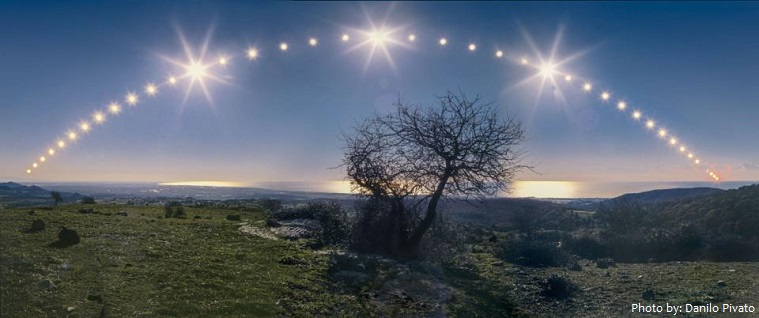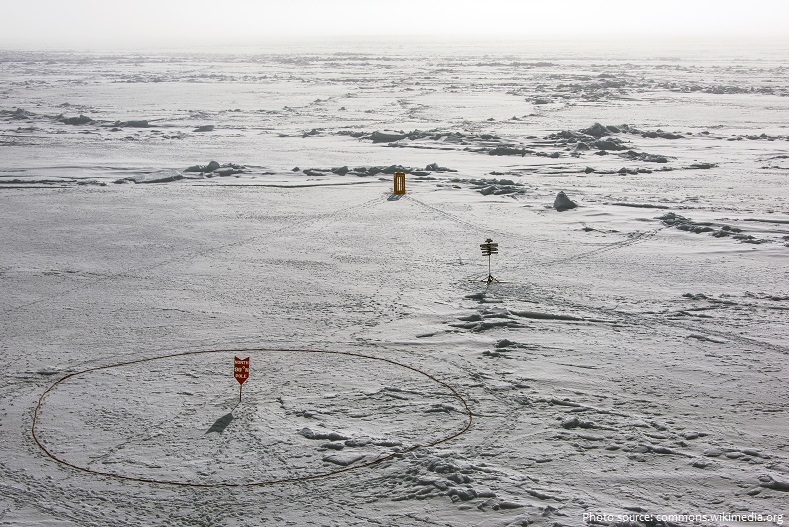
A solstice is an event that occurs when the Sun appears to reach its most northerly or southerly excursion relative to the celestial equator on the celestial sphere.
Two solstices occur annually, in June and December.
During the June solstice (marked between June 20 and June 22), solar declination is about 23.5°N (the Tropic of Cancer).
During the December solstice (marked between December 20 and December 23), solar declination is about 23.5°S (the Tropic of Capricorn).

In many countries, the seasons of the year are determined by reference to the solstices and the equinoxes.
Since prehistory, the summer and winter solstices have been seen as a significant time of year in many cultures, and have been marked by festivals and rituals.
The summer solstice, also known as estival solstice or midsummer, occurs when one of Earth‘s poles has its maximum tilt toward the Sun. It happens twice yearly, once in each hemisphere (Northern and Southern). For that hemisphere, the summer solstice is when the Sun reaches its highest position in the sky (for areas outside of the tropics) and is the day with the longest period of daylight. Within the Arctic circle (for the northern hemisphere) or Antarctic circle (for the southern hemisphere), there is continuous daylight around the summer solstice.

The winter solstice, also called the hiemal solstice, hibernal solstice, and brumal solstice, occurs when either of Earth’s poles reaches its maximum tilt away from the Sun. This happens twice yearly, once in each hemisphere (Northern and Southern). For that hemisphere, the winter solstice is the day with the shortest period of daylight and longest night of the year, when the Sun is at its lowest daily maximum elevation in the sky. Either pole experiences continuous darkness or twilight around its winter solstice. The opposite event is the summer solstice.
For an observer on the North Pole, the Sun reaches the highest position in the sky once a year in June. The day this occurs is called the June solstice day. Similarly, for an observer on the South Pole, the Sun reaches the highest position on the December solstice day.

The word “solstice” is derived from the Latin sol meaning “sun” and sistere meaning “to stand still” – because at the solstices, the Sun’s declination appears to “stand still” – that is, the seasonal movement of the Sun’s daily path (as seen from Earth) pauses at a northern or southern limit before reversing direction.
“Midnight sun” describes the phenomenon surrounding the summer solstice, when the sun remains visible at midnight in the weeks leading up to and following the event. The “polar night” surrounds the winter solstice, when the sun remains below the horizon during the weeks leading up to and following the event.
Christmas takes place shortly after winter solstice, absorbed tradition from winter solstice celebration. The Romans marked the winter solstice on December 25. The first recorded Christmas celebration was in Rome on December 25, AD 336.

In Ancient Egypt, the summer solstice signaled the beginning of the new year. Sirius, the brightest star in the night sky, appeared soon after the summer solstice. Egyptian astronomers associated the annual appearance of Sirius with the seasonal flooding of the Nile River, which the civilization depended on for agriculture.
Stonehenge is a prehistoric monument on Salisbury Plain in Wiltshire, England, two miles (3 km) west of Amesbury. It consists of an outer ring of vertical sarsen standing stones, each around 13 feet (4.0 m) high, seven feet (2.1 m) wide, and weighing around 25 tons, topped by connecting horizontal lintel stones. Inside is a ring of smaller bluestones. Inside these are free-standing trilithons, two bulkier vertical Sarsens joined by one lintel. The whole monument, now ruinous, is orientated towards the sunrise on the summer solstice.

The Romans treated the solstice as more of a celebration by holding a feast called the Saturnalia in honor of the god of agriculture, Saturn.
The northern solstice passed from Leo into Cancer in year −1458, passed into Gemini in year −10, passed into Taurus in December 1989, and is expected to pass into Aries in year 4609.
The southern solstice passed from Capricornus into Sagittarius in year −130, is expected to pass into Ophiuchus in year 2269, and is expected to pass into Scorpius in year 3597.
Every planet in our solar system experiences solstices. The timing and extent of solstices are largely determined by the planet’s axial tilt, orbital eccentricity, and distance from the sun.
The 687-day orbit of Mars around the Sun (almost twice that of the Earth) causes its summer and winter solstices to occur at approximately 23-month intervals.
